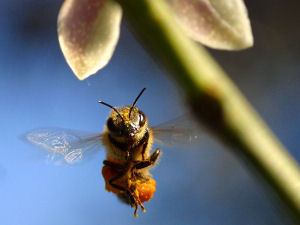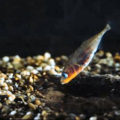
Fifty-five million years ago, the Earth experienced a rapid jump in global carbon dioxide levels that raised temperatures across the planet. Now, researchers studying fossilized plants from that time have found that the rising temperatures may have boosted the foraging of insects. The findings, published in the Proceedings of the National Academy of Sciences, could have profound implications for present-day agriculture and wilderness areas.
The researchers, supported by the National Science Foundation, believe their research convincingly shows that there is a link between temperature and insect feeding. “When temperature increases, the diversity of insect feeding damage on plant species also increases,” said lead author Ellen Currano, from Pennsylvania State University.
Currano collected the study fossils from the badlands of Wyoming, gathering more than 5,000 fossil leaves from five sites representing time zones before, during and after the roughly 100,000 year temperature spike called the Paleocene-Eocene Thermal Maximum (PETM).
The researchers found that the PETM plants were noticeably more damaged than fossil plants before and after that period. The PETM plants, many of which are legumes – the family that now includes beans and peas – show damage with greater frequency, greater variety (such as mining, galling, surface feeding and other assaults) and a more destructive character than plants from the surrounding geologic time periods.
The researchers also looked to see if the insect species feeding on the leaves changed over the time period. Interestingly, the analysis showed that what changed was the abundance of insect species that are highly specialized in the type of plant they consume and the way they consume it, such as leaf miners and gallers – all of which were far more abundant in the PETM.
“We wanted to see whether the increase in insect damage during the PETM was because the leaves were less tough or more nutritious,” said Currano. “There is no evidence to support this. Instead, we think that the warming allowed insect species from the tropics, particularly those that feed in a highly specific manner, to migrate north.”
Biologists are already aware that insects in the tropics consume more plants and that warming temperatures are causing organisms to widen their ranges. In addition, research has shown that plants grown under higher concentrations of carbon dioxide (CO2) are less nutritious, so insects must eat more plant tissue to get the same sustenance. These earlier studies support the recent findings about the PETM.
Because food webs that involve plant-eating insects affect as much as three quarters of organisms on Earth, the researchers believe that the current increase in temperature could have a profound impact on present ecosystems, and potentially to crops, if the pattern holds true in modern times. “Past climate-change effects on plant-insect interactions, specifically the probability of increased insect damage to plants with rising temperatures, is a forward-looking approach that will help us prepare for the effects of future global warming,” noted William Hahn, a program director at the National Science Foundation.
Related:
Bow To Your Insect Overlords!
Major Climate Changes Predicted For US
Down On The Farm – Yields, Nutrients And Soil Quality
Academics Mull Flow-On Effects Of Climate Change


















Comments are closed.